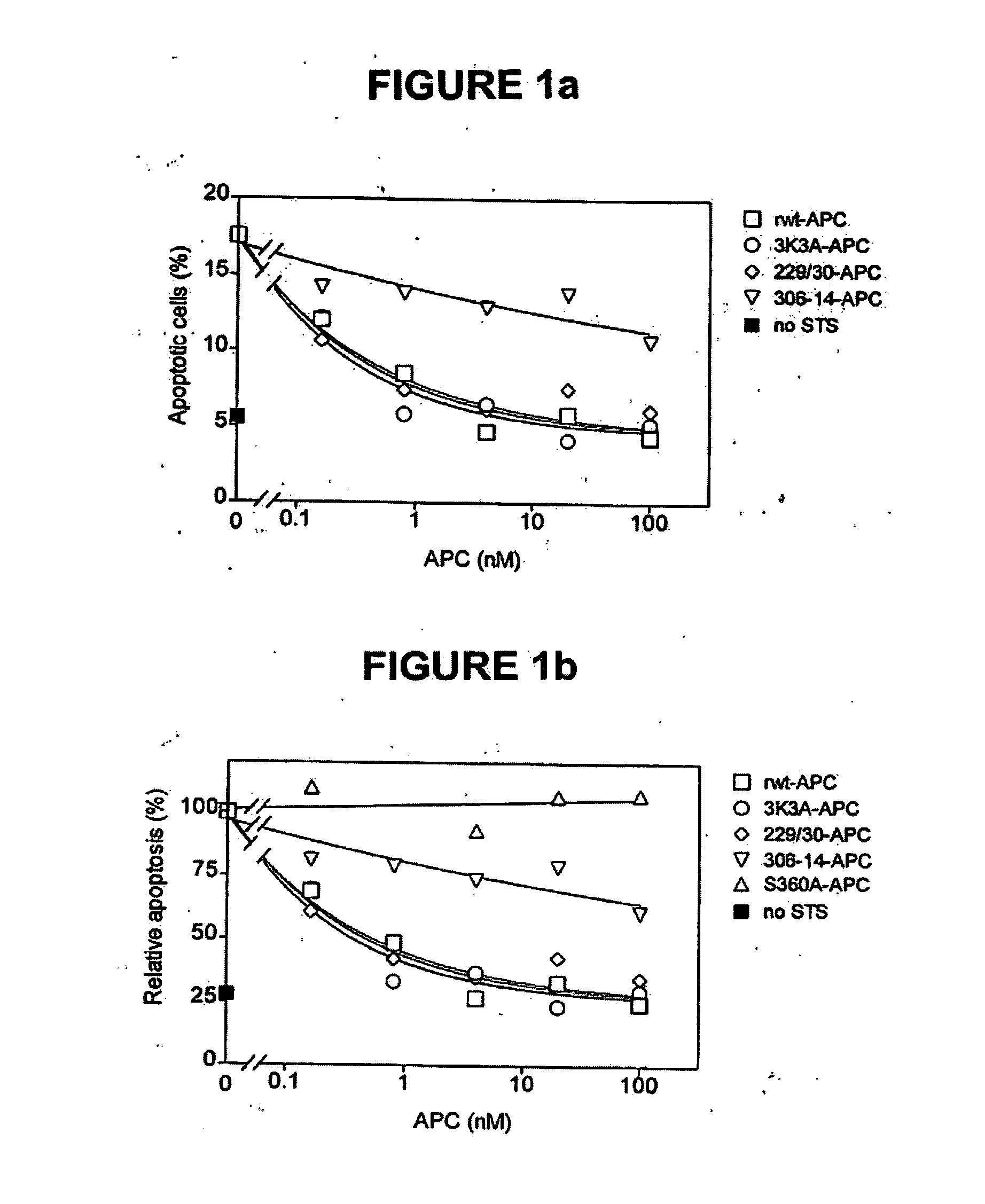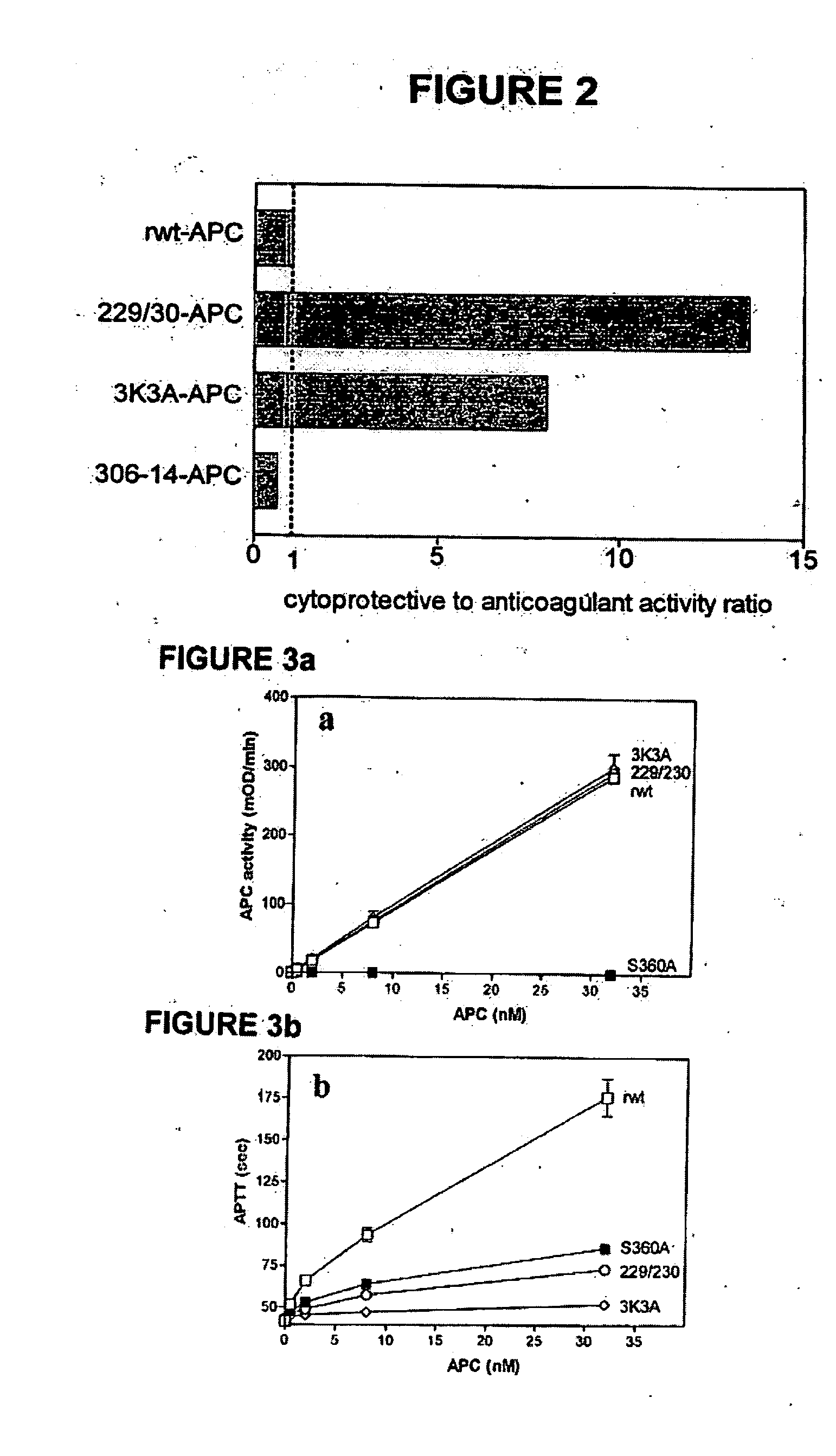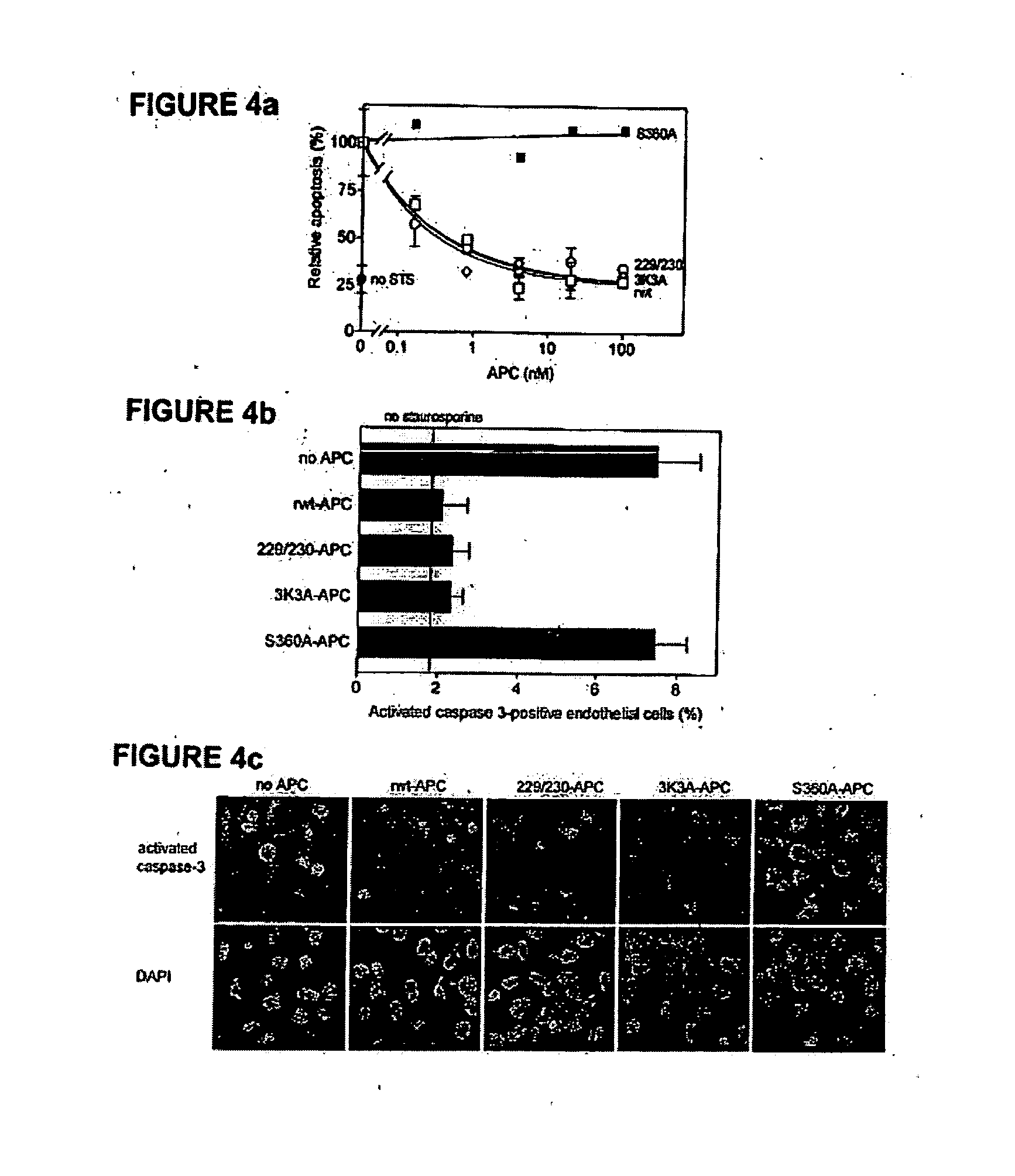Activated protein C variants with normal cytoprotective activity but reduced anticoagulant activity
a technology of activated protein and anticoagulant activity, applied in the field of variants, can solve the problems of limited information about the molecular mechanisms responsible for the direct anti-inflammatory and anti-apoptotic effect of apc on cells, the inability to establish the cause of infection, and the increased risk of serious bleeding of apc treatment, so as to prevent cell damage, alleviate or prevent cell damage
- Summary
- Abstract
- Description
- Claims
- Application Information
AI Technical Summary
Benefits of technology
Problems solved by technology
Method used
Image
Examples
example 1
[0050] Replacing the two arginine residues, Arg229 and Arg230, in the calcium-binding loop of APC with alanine residues resulted in a form of APC RR229 / 230AA-APC (229 / 230-APC), see Table 1) with only 6.6% residual anticoagulant activity. This reduction in anticoagulant activity of RR229 / 230AA-APC was primarily due to reduced inactivation of factor Va (FVa) at Arg506 whereas cleavage of factor Va at Arg306 was much less affected.
[0051] The dose-dependence for inhibition of apoptosis by RR229 / 230AA-APC (FIGS. 1a and 1b) was similar to that of recombinant wild type (rwt)-APC. Half-maximum inhibition of staurosporine-induced apoptosis by RR229 / 230AA-APC was achieved at 0.27 nM. This example demonstrates that the anticoagulant activity of APC is not required for the cytoprotective (anti-apoptotic) activity of APC.
example 2
[0052] In this example, an APC mutant in which three consecutive lysine residues in loop 37 were replaced with three alanines KKK191-193AM-APC (3K3A-APC), see Table 1) displayed only 15% residual anticoagulant activity as determined in a dilute prothrombin clotting assay (Gale et al., supra, 2002). The reduction in anticoagulant activity of KKK191-193AAA-APC was due to severely reduced cleavage of factor Va at Arg506 (11% of rwt-APC), whereas inactivation of factor Va at Arg306 was only moderately affected (67% of rwt-APC) (Table 1). Remarkably, as seen in FIGS. 1a and 1b, the anti-apoptotic activity of KKK191-193AAA-APC was similar to that of rwt-APC with half-maximum inhibition of staurosporine-induced apoptosis at 0.20 nM.
example 3
[0053] In this example, four out of the five basic amino acids in the so-called autolysis loop of APC were replaced by alanine residues, resulting in a form of APC RKRR306 / 311 / 312 / 314AAAA-APC (306-314-APC, see Table 1) having only 1.6% residual anticoagulant activity, as determined by the activated partial thromboplastin time (APTT) [765]. The reduction in anticoagulant activity of RKRR306 / 311 / 312 / 314AAAA-APC was due to severely reduced cleavage of factor Va at Arg506 (1.4% of rwt-APC) whereas inactivation of factor Va at Arg306 was less affected (16% of rwt-APC). The RKRR306 / 311 / 312 / 314AAAA-APC mutant was severely deficient in cytoprotective (anti-apoptotic) activity (FIGS. 1a and 1b), with inhibition of staurosporine-induced apoptosis requiring much higher concentrations of this mutant APC compared to rwt-APC or the other two APC mutants, RR229 / 230AA-APC and KKK191-193AAA-APC.
PUM
| Property | Measurement | Unit |
|---|---|---|
| concentration | aaaaa | aaaaa |
| dilute prothrombin time clotting assay | aaaaa | aaaaa |
| capillary permeability | aaaaa | aaaaa |
Abstract
Description
Claims
Application Information
 Login to View More
Login to View More - R&D
- Intellectual Property
- Life Sciences
- Materials
- Tech Scout
- Unparalleled Data Quality
- Higher Quality Content
- 60% Fewer Hallucinations
Browse by: Latest US Patents, China's latest patents, Technical Efficacy Thesaurus, Application Domain, Technology Topic, Popular Technical Reports.
© 2025 PatSnap. All rights reserved.Legal|Privacy policy|Modern Slavery Act Transparency Statement|Sitemap|About US| Contact US: help@patsnap.com



